InterPro IPW-CL review
The IPW-CL showcases the new Intel Core i9 9900K and NVIDIA GeForce RTX 2080 graphics for professional use
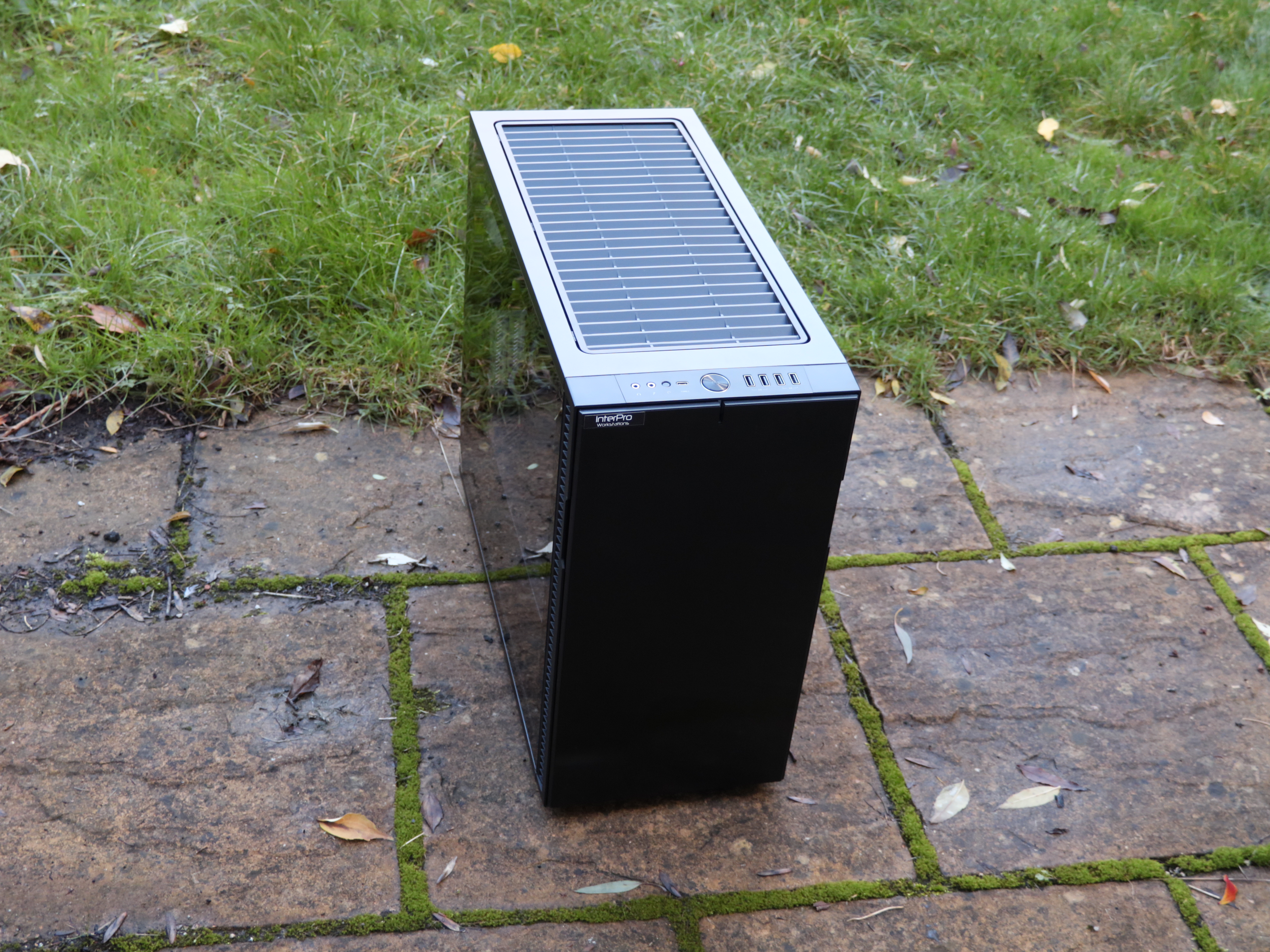
The IPW-CL is a great workstation for 3D animation modelling and 2D design work, with very good rendering capabilities as well.
-
+
Excellent for 3D animation modelling; very capable CPU rendering; excellent image editing; supreme GPU compute performance; reasonably priced for specification.
-
-
Consumer-grade graphics not so impressive with some engineering CAD and product design software.

The renewed pressure from AMD's Ryzen processors has kept Intel on its toes, and NVIDIA hasn't been resting on its laurels either. With the most recent incarnation of its IPW-CL workstation, InterPro is showcasing the latest and greatest from both companies.
The CPU is the ninth-generation Intel Core i9-9900K, and the graphics card the recently released NVIDIA GeForce RTX 2080. Together, these two newcomers have the potential to form the basis of a very powerful workstation.
InterPro IPW-CL: Processor and memory
The Intel Core i9 9900K is our first taste of the Coffee Lake-S processor in Core i9 form.
The Core i7 eight-generation Coffee Lake equivalents arrived about a year ago, but only with up to six cores. The Core i9 9900K has eight cores, and generally higher clock frequencies than the previous models. Confusingly, there is also a Core i9 9900X with ten cores from the earlier Skylake-X generation. But they are quite different beasts, because the latter uses the LGA 2066 socket, offers quad-channel memory, and costs twice as much.
In contrast, the Core i9 9900K uses the LGA 1151 socket that has been the mainstream platform for consumer-grade CPUs since the Skylake era. This is the second-generation version, specifically aimed at Coffee Lake, but processors using this socket still only offer dual-channel memory support. Nevertheless, the Core i9 9900K is an eight-core processor with Hyperthreading, whilst the Core i7 and i5 iterations no longer offer this feature.
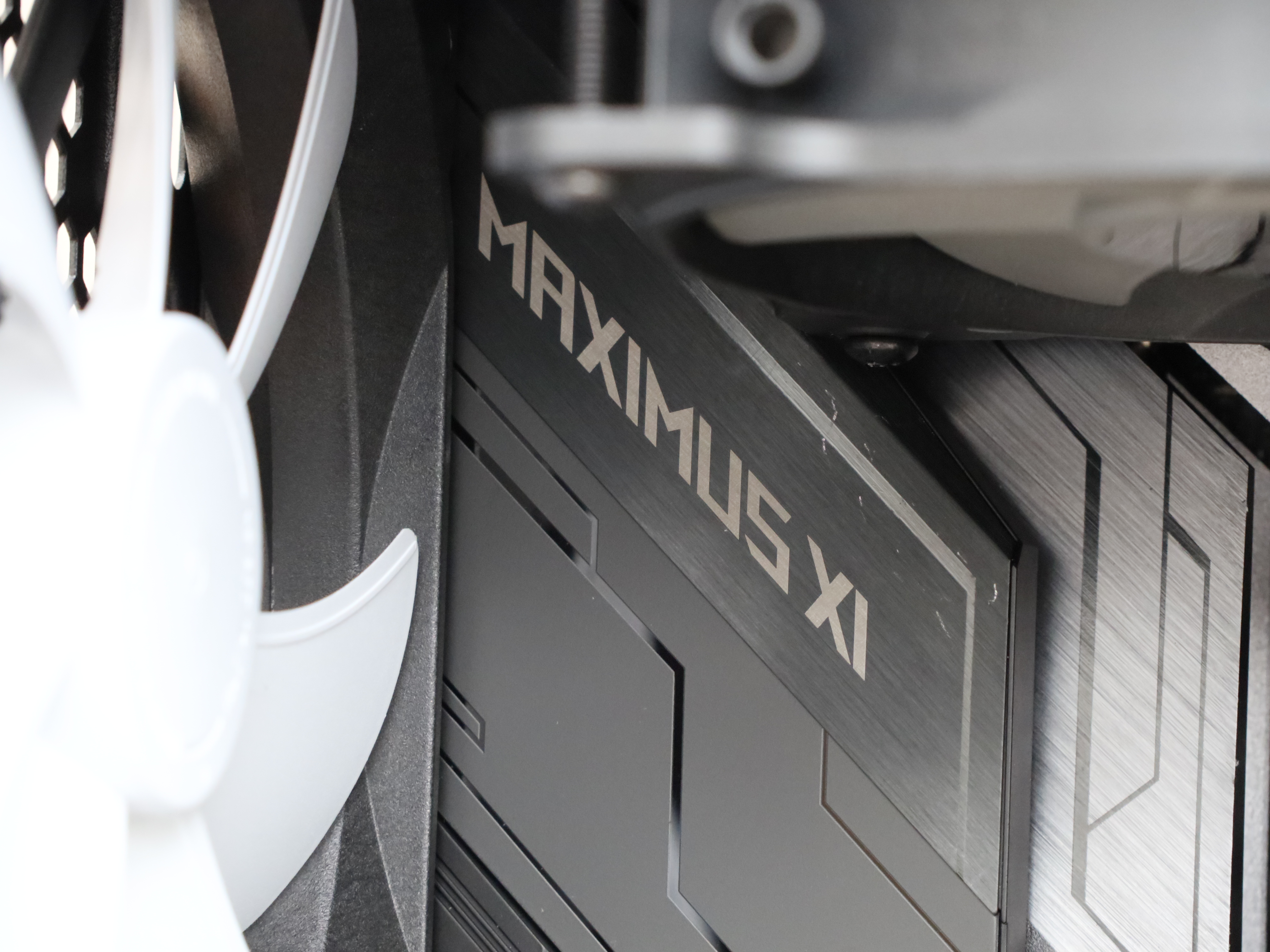
The base clock rate is 3.6GHz, but you will almost never see this in practice because all eight cores can run at 4.7GHz, up to four cores at 4.8GHz and two cores at 5GHz. So this processor has great potential for modelling and rendering activities. Despite having a higher Clock rate than the Core i9 9900X, the Core i9 9900K is rated at 95W compared to the 9900X's 165W. A Corsair H100i V2 water cooler keeps the associated temperatures well and truly under control.
InterPro has housed this potent CPU in a high-quality ASUS ROG MAXIMUS XI HERO motherboard, which uses the Intel Z390 chipset and sports four DIMM slots supporting up to 64GB of 4,400MHz DDR4 memory. These slots are populated with two 16GB modules of 3,000MHz DDR4, for a healthy total of 32GB.
InterPro IPW-CL: Graphics acceleration
As this is a workstation, you would have expected to see NVIDIA Quadro or AMD Radeon Pro graphics. However, workstation manufacturers have told us that many 3D content professionals actually specify high-end consumer grade graphics, particularly for games design.
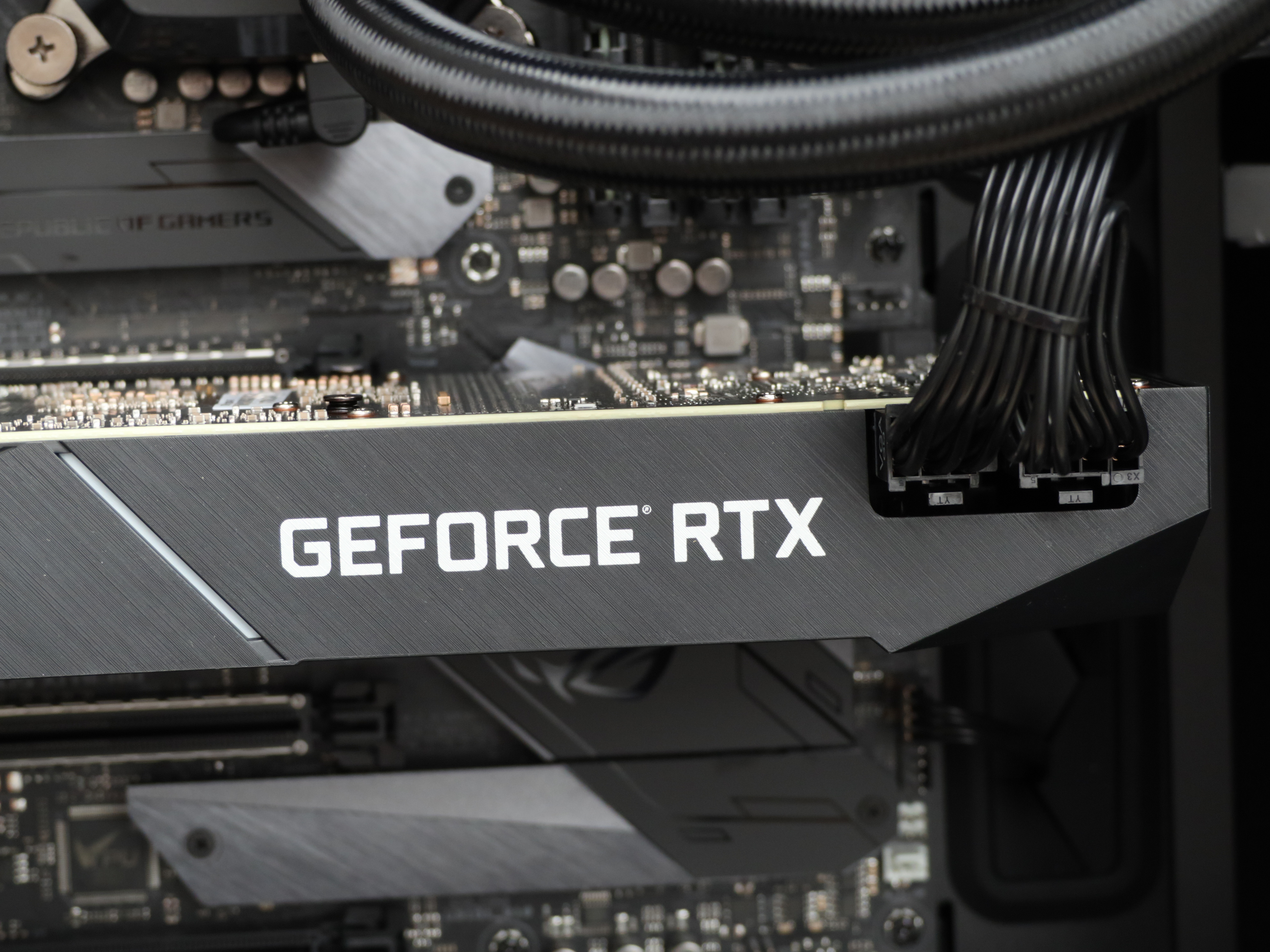
It's also worth noting that the RTX generation of Quadros hasn't arrived on the market yet, and the mainstream 4000-series version won't be in the initial release either. So, if you want the latest NVIDIA RTX GPU generation, then a GeForce is the way to go.
InterPro has opted for the enormously powerful RTX 2080, which is the middle of the current GeForce RTX range. This graphics card has a whopping 2,944 GPU cores - nearly 400 more than a NVIDIA Quadro P5000, and the same as the forthcoming Quadro RTX 5000.
The GPU core runs at 1,515MHz with a 1,710MHz boost. The GeForce RTX also sees the debut of GDDR6 memory, with 8GB supplied on the 2080. The 256-bit interface provides 448GB/sec of frame buffer bandwidth.
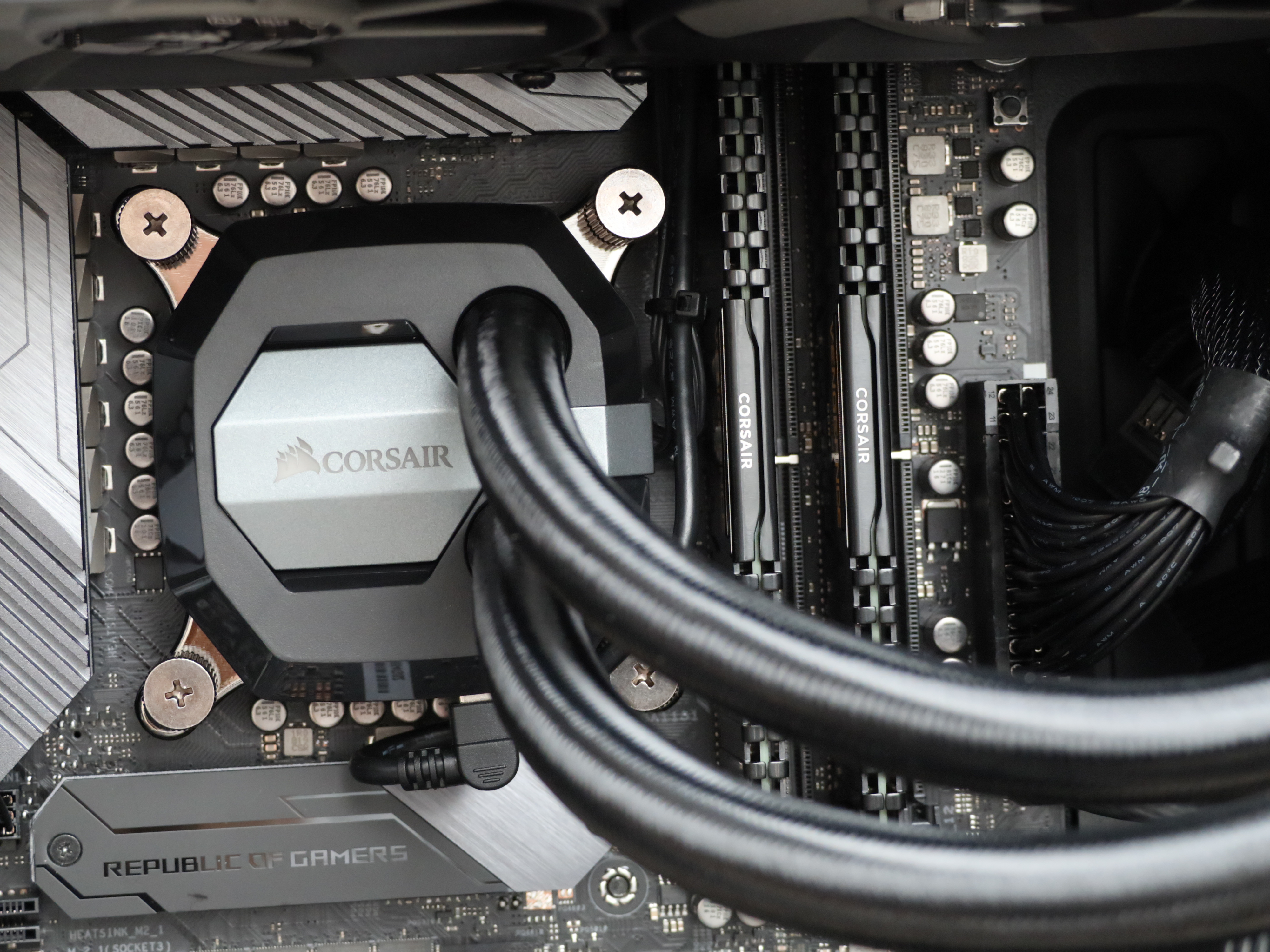
The major selling point of the NVIDIA RTX and the origins of its three-letter acronym is that it has enough grunt to provide real-time raytracing. But there isn't much software out there to take full advantage of this just yet - it's a future-facing feature.
The outputs on this card are very contemporary, too. Alongside a pair of full-sized DisplayPorts and full-sized HDMI is a USB Type-C port. Now that monitors are appearing with this connection, it could come in handy. The GeForce card can drive screens up to 7,680 x 4,320 resolution, as well.
InterPro IPW-CL: Storage
On one level, InterPro has taken the traditional route of offering a smaller SSD for operating system and applications plus larger SATA drive for general data. However, in this case, both are SSDs. The smaller one is a Samsung 970 EVO NVMe M.2 model with 500GB capacity, and the larger one a Samsung 860 EVO with 1TB, although our sample system didn't have this installed.
We've seen the 970 EVO before and it's a very quick SSD. When tested in the InterPro system with CrystalDiskMark 6, it managed a whopping 3,560.5MB/sec sustained reading and 2,488MB/sec writing. The 860 EVO will be held back by its SATA interface, and is rated at 550MB/sec reading with 520MB/sec writing, which is about as much as you can expect from SATA in the real world.
InterPro IPW-CL: Chassis design
The Fractal Design Define is a frequent choice for workstations, as it is a good middle ground between sober stylishness and build quality. However, InterPro has supplied the slightly larger R6 version rather than the classic R5 we've seen so many times before. The model included also sports a tempered glass side panel, so you can view your premium components in all their glory.
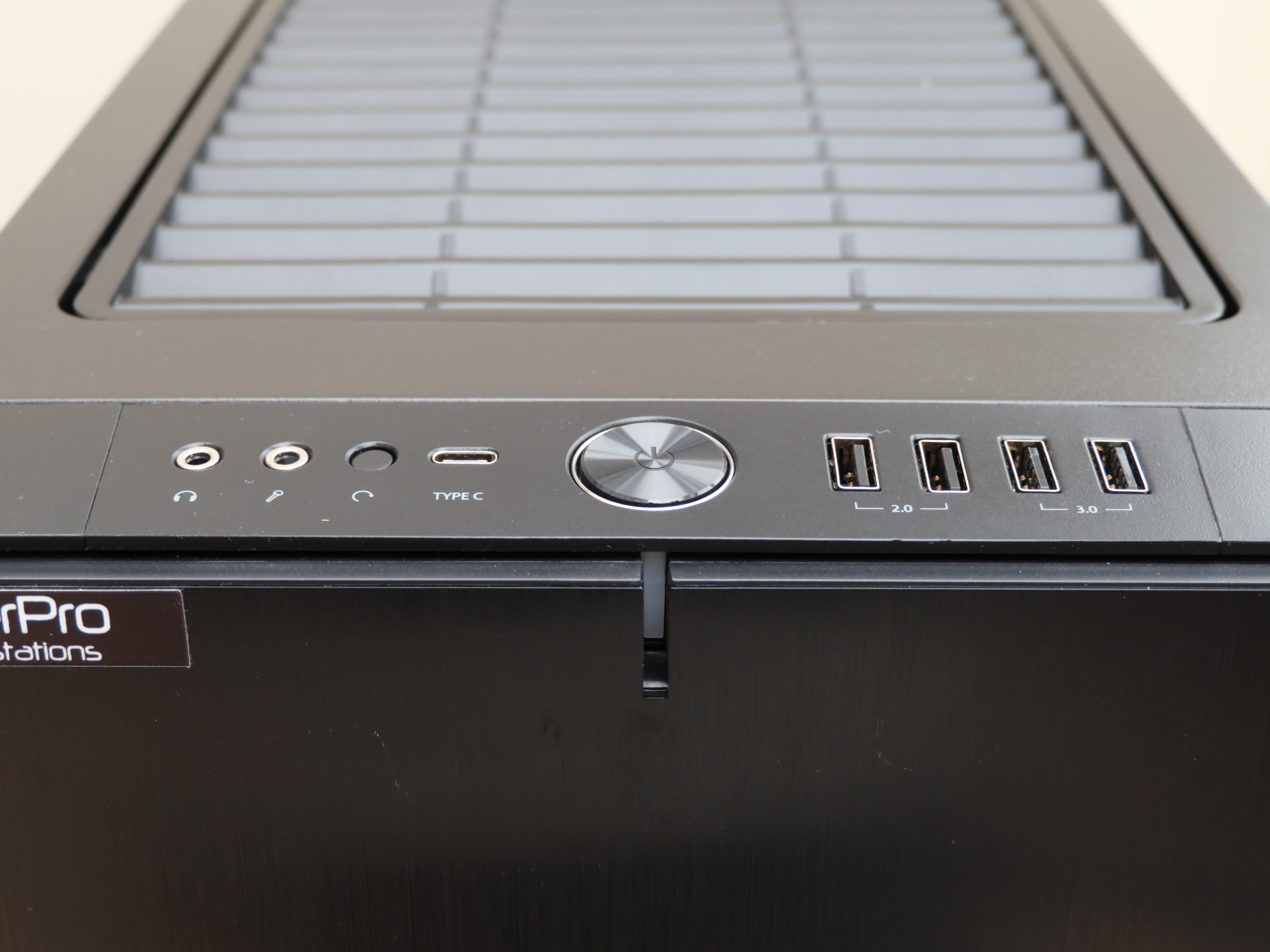
You can fit up to six 3.5in or 2.5in drives, plus two further 2.5in drives. There's space for a 5.25in drive, and InterPro has populated this with a 24x ASUS DVD rewriter. Although the CPU isn't that hungry on power, a reasonably potent 750W EVGA GQ modular Gold Efficiency PSU is included to be on the safe side.
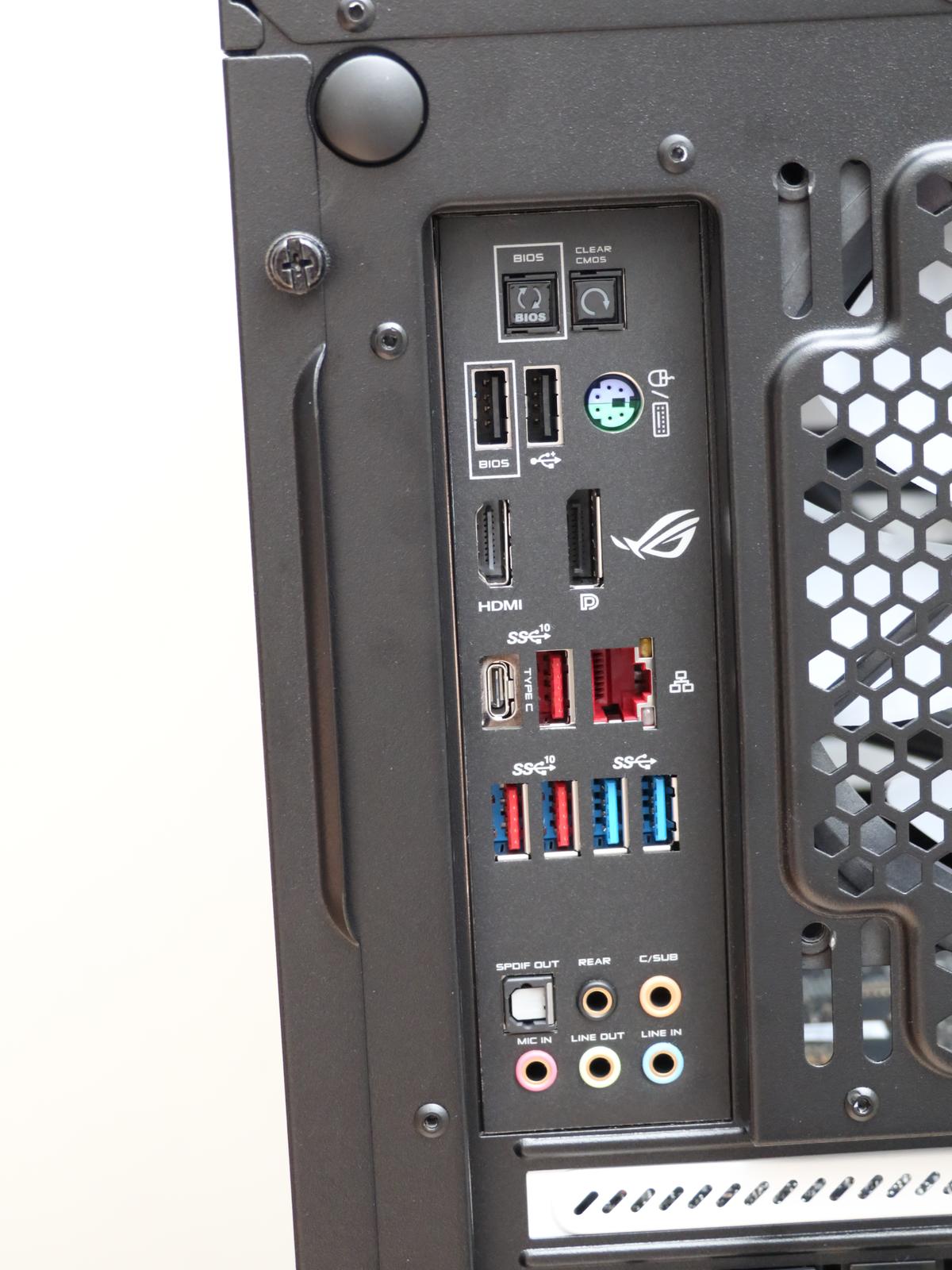
On the top front edge alongside the power buttons and audio minijacks are two USB 2.0, two USB 3.0, and even USB Type C connections. The rear is home to a healthy array of connections too. There's a legacy combo keyboard/mouse PS/2 port, a single USB 2.0 and another dedicated to flashing the motherboard BIOS. Full-sized DisplayPort and HDMI are included, although these are only for use with CPU onboard graphics. Then there's Gigabit Ethernet and both Type A and Type C USB 3.1 Gen 2. A further Type A USB row includes two more 3.1 Gen 2 and two Gen 1. Finally, five analog audio minijacks and S/PDIF provide surround sound output options.
InterPro IPW-CL: Processor performance
The Core i9 9900K is essentially a high-end consumer-grade CPU, but its capabilities are workstation class, which are well illustrated by the results in our IT Pro Benchmarks.
The overall score of 345 isn't so far behind the 16-core Armari Gravistar BR-850A, and the image editing result of 186 is one of the highest we've seen, thanks to the ability to run two cores at 5GHz. The scores of 333 in video editing and 406 in multi-tasking show excellent media creation abilities, although not quite as adept in this respect as the 16-core AMD Ryzen Threadripper 2950X.
Similarly, the Maxon Cinebench R15 rendering score of 1,997 is excellent, but behind workstations using the 16-core AMD processor. The GeekBench 4 results reflect the strengths and (relative) weaknesses of this processor as well. The single-core score of 6,227 beats the 2950X by about 20%, but unsurprisingly it's behind on multi-core activities, with 34,071.
So the AMD CPU still retains its crown for multi-threaded activities, whilst the 9900K wins out on single-core activities image editing thanks to its high clock speed.
InterPro IPW-CL: Graphics performance
As we noted earlier, 3D content professionals have been tending towards GeForce graphics for many types of creation activity, and it's not hard to see why looking at how the RTX 2080 performs. The result of 179.94 in Maxon Cinebench R15 OpenGL is excellent, and many of the SPECviewperf 13 scores are similarly commendable. If you model in 3ds Max or Maya, the results of 175.66 in 3dsmax-06 and 331.07 in maya-05 will beat even a NVIDIA Quadro P6000.
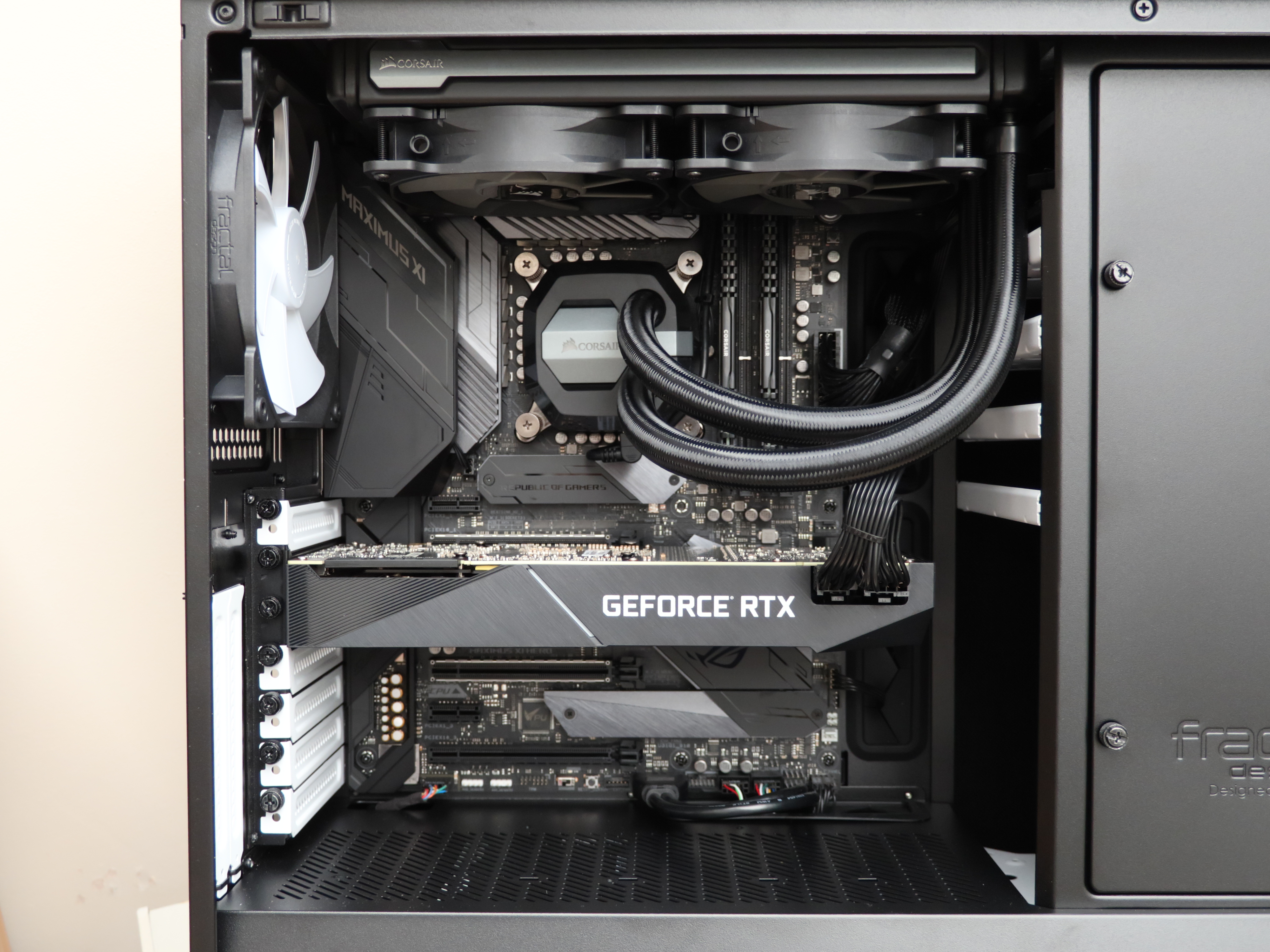
However, the RTX 2080 is not so impressive for CAD and engineering. The catia-05 result of 156.42 is behind high-end professional cards, as is 108.92 in sw-04. The score of 21.84 in snx-03 is woeful. If you design with Siemens NX, you'd be better off specifying a Quadro or AMD Radeon Pro. However, the creo-02 result of 221.64 is up with the best.
The RTX 2080 does have a lot of raw grunt at its disposal, though. In our LuxMark 3.1 render test, it managed 6,723, which is 42% more than the AMD Radeon Pro WX 8200, 36% ahead of the WX 9100 and 24% ahead of the hugely expensive NVIDIA Quadro P6000. This will be a great card for GPGPU rendering and bodes well for when its raytracing abilities are more widely harnessed.
| 3dsmax-06 | 175.66 |
| catia-05 | 156.42 |
| creo-02 | 221.64 |
| energy-02 | 23.23 |
| maya-05 | 331.07 |
| medical-02 | 65.34 |
| showcase-02 | 134.14 |
| snx-03 | 21.84 |
| sw-04 | 108.92 |
Overall, then, this is a great workstation for a variety of content creation tasks. It will be excellent for animation work, with superb modelling abilities and very good rendering. It will be brilliant for image editing, 2D graphics and video editing as well.
Unless you use PTC Creo, however, you'd be better off specifying alternative graphics if you do product design or engineering CAD. Other than that, though, this is a potent and well-specified workstation for the money.
Verdict
The IPW-CL is a great workstation for 3D animation modelling and 2D design work, with very good rendering capabilities as well.
| Processor | 3.6GHz Intel Core i9 9900k |
| RAM | 32GB 3,000MHz DDR4 SDRAM |
| Graphics | 8GB GDDR6 NVIDIA GeForce RTX 2080 |
| Storage | 500GB Samsung EVO 970 NVMe SSD1TB Samsung EVO 860 SATA SSD |
| Operating system | Windows 10 Professional 64-bit |
| Warranty | 3 years RTB Parts and Labour |
| Website | https://www.ipworkstations.com/ |
Get the ITPro daily newsletter
Sign up today and you will receive a free copy of our Future Focus 2025 report - the leading guidance on AI, cybersecurity and other IT challenges as per 700+ senior executives
Dr James Morris has worked as a technology journalist for over 25 years, including spending nine years on the staff of market-leading computer magazine PC Pro, the last five of which were as the publication’s editor. He specialises in enterprise-grade software and hardware, with a particular focus on content creation. He launched a pioneering video channel for HEXUS.net in 2006 and ran the video reviews channel for TrustedReviews.com for four years. He also runs a successful online digital content and commercial video production company, t-zero communications Ltd.
Dr Morris is a prolific technology writer and contributes commercial content for major IT brands including AMD, BlackBerry, Dell, Cognizant, HP, and IBM. He published a book on artificial intelligence, Can Computers Create Art? in 2009. He is also an academic, and is currently Pathway Director of the MA, Interactive Journalism at City, University of London.
Previously, he was course leader for the BA in Web Media Production at Ravensbourne University. He has a PhD in Philosophy, Art and Social Thought from the European Graduate School in Switzerland, a Master's in Media Arts from the New School in New York, USA, and a Bachelor's in Social Anthropology from the London School of Economics.
Dr. Morris can be found on Twitter at @Cyberwest, or emailed at j@tzero.co.uk
-
 Westcon-Comstor and Vectra AI launch brace of new channel initiatives
Westcon-Comstor and Vectra AI launch brace of new channel initiativesNews Westcon-Comstor and Vectra AI have announced the launch of two new channel growth initiatives focused on the managed security service provider (MSSP) space and AWS Marketplace.
By Daniel Todd Published
-
 Third time lucky? Microsoft finally begins roll-out of controversial Recall feature
Third time lucky? Microsoft finally begins roll-out of controversial Recall featureNews The Windows Recall feature has been plagued by setbacks and backlash from security professionals
By Emma Woollacott Published
-
 The UK government wants quantum technology out of the lab and in the hands of enterprises
The UK government wants quantum technology out of the lab and in the hands of enterprisesNews The UK government has unveiled plans to invest £121 million in quantum computing projects in an effort to drive real-world applications and adoption rates.
By Emma Woollacott Published